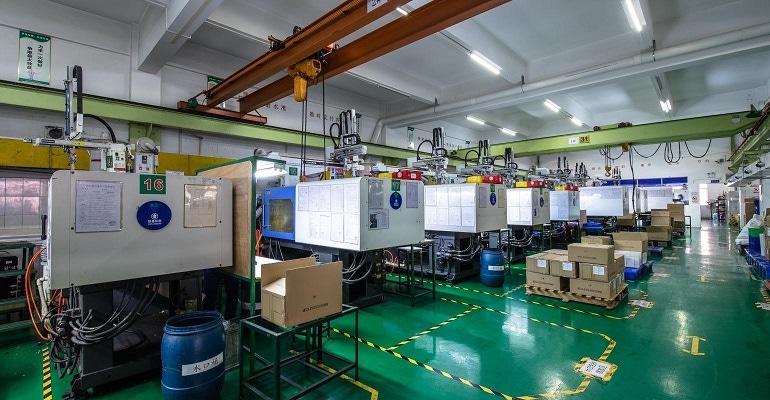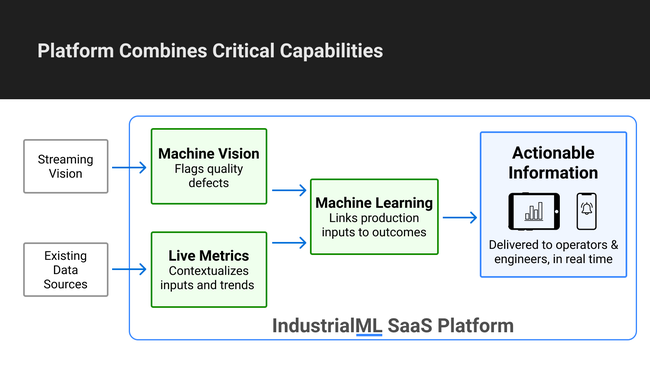Manufacturing Challenges During a Pandemic
The pandemic-related challenges faced by manufacturing are varied. Some shops shut down and reopened. Others never closed but had to adjust for social distancing.
November 3, 2020

McKinsey and Company studied manufacturing organizations as the COVID-19 pandemic swept across the globe. The consulting company reported on how manufacturers faced profound operational challenges. Some shut down factories temporarily in response to government restrictions. Others shut down in response to falling demand. Still, others faced sharp increases in demand for essential supplies.
Surprisingly, some manufacturing personal in front-office work or even those involved in application design and plant software development took their work home. One challenge they all had in common is the unexpected length of the pandemic. Remember when we expected to count the lockdown in weeks? A prolonged period of uncertainty is one of the greatest challenges for all manufacturers.
Those manufacturers that continued their operation – and those that shut down and then returned to production – found they had to prepare for a lasting need to maintain enhanced hygiene and physical distancing.

The New Rules for the COVID-19 World
McKinsey pointed to three areas of focus designed to help plant leaders navigate the transition from the initial crisis response to the “next normal.”
Protect the workforce: Formalize and standardize operating procedures, processes, and tools that help keep staff safe. Build workforce confidence through effective, two-way communication that responds to employees’ concerns through flexible adaptation.
Manage risks to ensure business continuity: Anticipate potential changes and model the way the plant should react well ahead of the fluctuations to enable rapid, fact-based actions.
Drive productivity at a distance: Continue to effectively manage performance at the plant while physical distancing and remote working policies remain in place.
We wanted to see what was happening on the ground in the world of manufacturing, so we checked in with Arjun Chandar, co-founder of IndustrialML. His firm offers a comprehensive software platform to run manufacturing plants. We caught up with Chandar to see what manufacturers are facing during the pandemic.
DN: Have manufacturers moved ahead with smart manufacturing initiatives during the pandemic?
Arjun Chandar: The cash crunch in 2020 has slowed the pace for now, but the needs which the pandemic has highlighted will lead to a significant acceleration in 2021. So, in the short term, there has not been a rush to implement smart factory initiatives, but manufacturers have universally commented on the increased need to invest in smart factory systems in 2021 and beyond. They understand that things like remote monitoring and optimized use of resources are even more critical to better survive events like this.
DN: Are certain technologies favored in this current environment?
Arjun Chandar: Remote monitoring technologies, in particular, are growing in favor since they allow manufacturing engineers and managers to stay attuned to the progress of the factory even if they need to stay socially distanced from the plant floor.
DN: Are there differences in different geographies? Different countries? Different sectors?
Arjun Chandar: We have seen particular interest in APAC and the Indian subcontinent, as these geographies generally have not been targeted by enterprise platforms to the same degree as large American manufacturers in the past. In large part for the same reason (lack of incumbent players targeting the space), the interest in these technologies is particularly prevalent in heavy industries or early-supply-chain industries such as steel, plastics, or paper production, which have operated in much the same way for decades but have faced fresh vulnerability due to attrition and pandemic shutdowns.
DN: Are equipment suppliers designing easier-to-deploy technologies that support the smaller manufacturers?
Sensors that collect data and transmit it over the internet have become much more commoditized over the last 10 years, which means smaller manufacturers have the ability to collect vast amounts of data cheaply. The main barrier to adoption, other than organizational inertia, has been that smaller companies have no infrastructure to use that data effectively.
Now, enterprise platform and ML-based analysis providers are slowly getting smarter about making their products easier to deploy and connect data to. More importantly, payments for enterprise software services are migrating more to allow accounting as operational rather than capital expenditures, which makes the internal approval process easier for manufacturers.
Rob Spiegel has covered automation and control for 19 years, 17 of them for Design News. Other topics he has covered include supply chain technology, alternative energy, and cybersecurity. For 10 years, he was the owner and publisher of the food magazine Chile Pepper.
About the Author(s)
You May Also Like





